Familiarity breeds comfort—no matter how dysfunctional the situation. Despite your best efforts to communicate the challenges facing your organization and build an indisputable case for change, you face an uphill battle. Not everyone will be enthusiastic about the weaknesses you’ve exposed and the prospect of embarking on a project that radically changes the status quo.
In this blog, I’m going to explore a few tips for presenting a good case for change and investment in your IT Service Management (ITSM) strategy, focusing on the structure of the pitch itself—so your pitch is successful. There’s lots of guidance out there about the more formal aspects of building the business case, but not much about how to summarize and present that information during any live pitch you’ll inevitably have to make.
In this article I include:
- A look at the people involved in deciding
- A step-by-step process for creating your pitch, with real examples
- A free, downloadable PowerPoint template for creating your pitch deck
Some of the folks you might meet
When it comes to ITSM transformation, people—your staff, your users, and your leadership—pose the greatest challenges and opportunities. Understanding who you need to convince and what they care about is critical to making your case.
Before we get into the construction of the pitch itself, let’s briefly consider the three basic groups and behaviors you’re likely to encounter, and share some effective approaches for dealing with each of them.
The Supporters
Your supporters are vocal, credible, and on your side. If they’re employed in departments outside IT, they may make even better allies. Usually, they will support you in meetings, validating your findings and proposed plans.
Your engagement strategy: This one’s simple. Leverage your relationships and take advantage of their enthusiasm and support while you have it!
The Detractors
Everyone reacts to change differently. Those who object have diverse motives—some are overt and explicit, others are personal and concealed. Often the detractors are the people who have invested significant resources in the current scenario or are comfortable with what’s now familiar and easy.
Opposing points of view can be useful. When they’re vocal, credible, and contentious, they become troublesome.
Your engagement strategy: Your assignment is to convert as many people from this category to supporters. Your impulse may be to dismiss or cautiously respond to the detractors’ objections. Be careful. The benefits of a Socratic method are well documented. You’ll overlook valid concerns and oversights in your own approach if you push back too quickly.
The Bankers
Successful businesses are built and run with dreamers and pragmatists. The dreamers are paid to brainstorm useful and creative approaches to investing capital. The pragmatists, or bankers, are there to safeguard the wealth. Typically, the bankers’ concerns stem from a desire to ensure that the right things are done with precious resources.
Your engagement strategy: Your challenge is to convince the bankers that the investment is worthwhile and will deliver a positive ROI—well beyond the confines of IT. Approach your business case and associated presentations with an investment mindset. Imagine it’s your own money on the table. What would you need to understand and how would you wish to be approached before you were even prepared to entertain the discussion?
Building your pitch presentation
Assuming you’ve convinced enough of the right people that your ITSM operations need serious reevaluation, you will be asked to present a business case that justifies the project.
In my experience, this can be a difficult and nuanced exercise. The following outline (summarized in figure 1) provides a seven-step structure you can use to build an ITSM presentation for key decision makers. I’ll review each step, offering some ideas centered around constructing the information and key messages, and including some illustrative examples of compelling points to make.
Each section also includes a sample PowerPoint slide providing an example of how to structure an ITSM presentation based on the information I’m providing here. Download the free PowerPoint file I created to use for your own pitch presentation here:
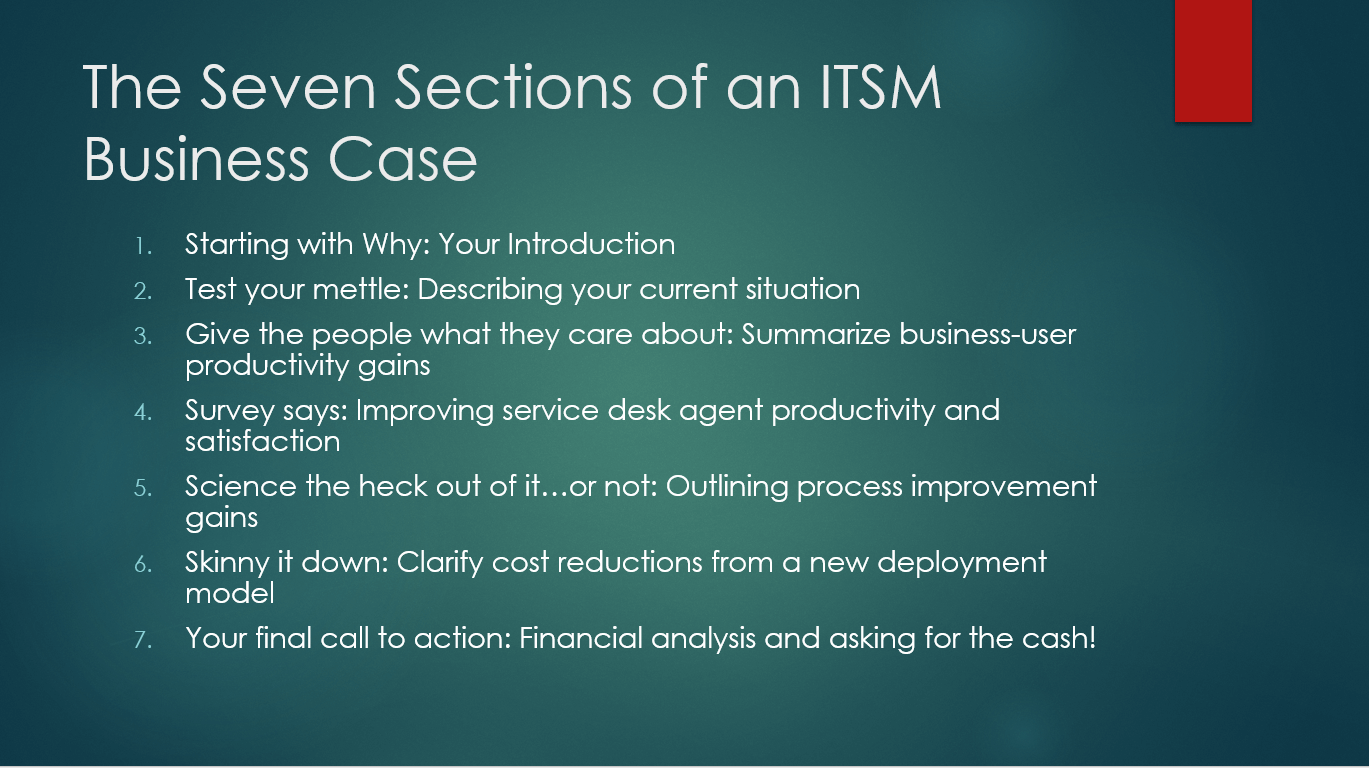
Figure 1: The Seven sections of an ITSM Business Case presentation
Section 1. Starting with Why: Your introduction
Fans of Simon Sinek and his thinking around the ‘golden circle’ will recognize the recommendation to start your pitch with the ‘Why’: This part of your presentation is where you’ll introduce your audience to the nature and scope of your project and, most importantly, the factors driving investment. It can be useful to assume your proposal is new to your audience and that some of the stakeholders come from departments outside IT.
Remember, this is a presentation—not a project plan! You’ll want to practice restraint. You’ll also want to refrain from including too much financial analysis upfront. That’s a surefire way to invite debate and clarification, preventing you from moving forward. Instead, add a full financial section to your backup slides or as your final call to action if this is your investment pitch.
Here are some illustrative examples of things to include in Section 1:
Primary motivations and pain (a summary of ‘Why’)
- Increase business user productivity
- Improve service availability
What we’re proposing
- Aligning to ITIL best practices in four key support processes
- Consolidating our 3 ITSM systems to a single cloud-based solution
Key sources of projected value
- We think we can save every business user an hour and a half everyweek
Some helpful tips
- Be selective: Focus on what really
- Limit yourself to 5-7 key points.
- Lead with end-user and business-related drivers.
- Tailor each section to the audience’s interest; make it relevant.
- If you use acronyms, include explanations.
The sample PowerPoint slide in Figure 2 shows how you can structure these Section 1 examples for an ITSM business case presentation.

Figure 2: A sample PowerPoint showing how to structure an introduction for an ITSM business case
Section 2. Test your mettle: Describing your current situation
Use these slides to provide a brief and honest assessment of your current situation and its impact on the broader organization. Scary, eh? But by giving stakeholders context, they will have a better understanding of why ITSM is such an important discipline!
Some organizations choose not to include a section like this, particularly if it discloses subpar performance or capabilities. But this kind of analysis can be incredibly powerful, and some audiences will appreciate your candor. Only you really understand your political situation, so it’s your choice how much you highlight current shortcomings.
Illustrative example of things to include in Section 2:
Headline items: What’s wrong with our current setup
- First line resolution is 40% lower than benchmark
- We are unable to automate Service Level Agreements
Failure examples and estimated impact (for the brave!)
- Uncorrelated failure resulted in payment processing outage for 3 hours
- Two-day outage of online transactions through failed change
User satisfaction data summary
- 20% of users are satisfied with our responsiveness
Figure 3 shows a sample PowerPoint slide, discussing how these items could be approached during your presentation.
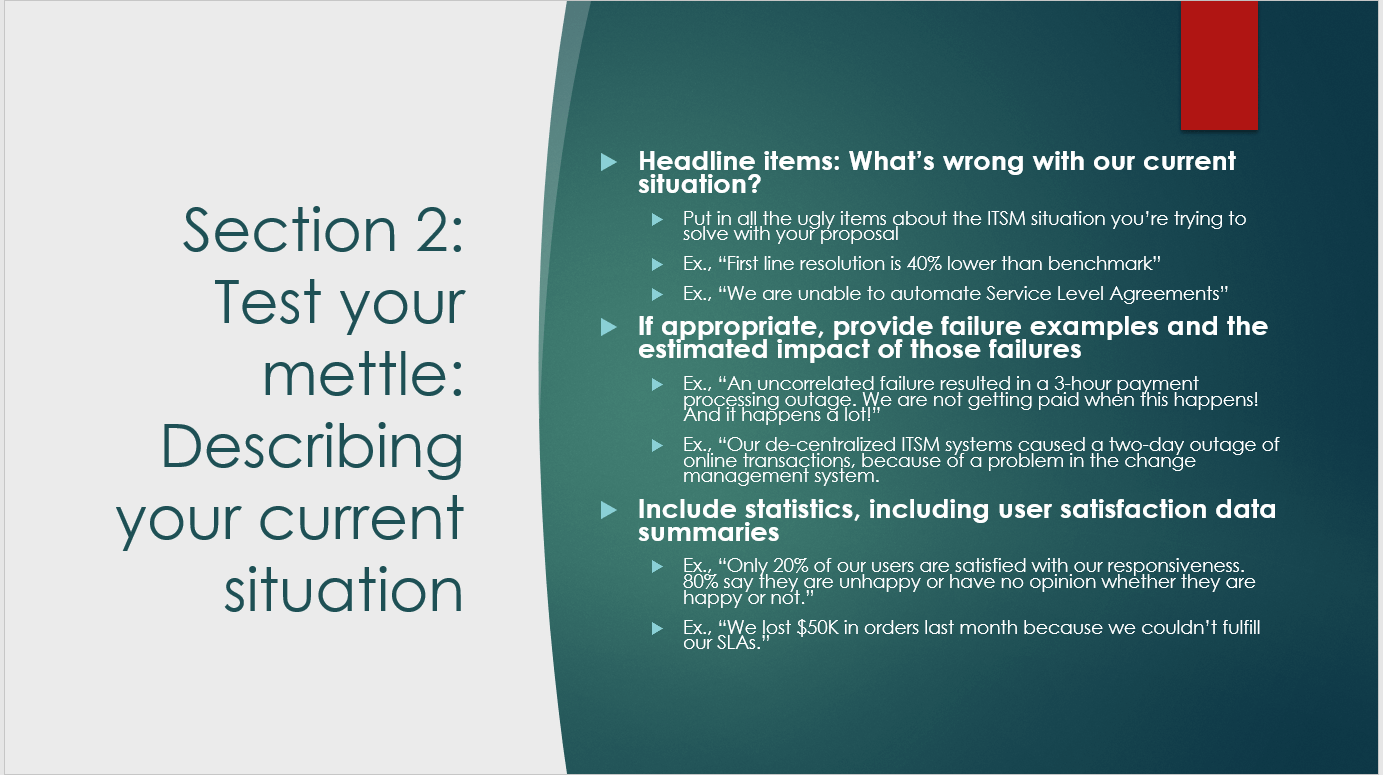
Figure 3: What describing your current situation might look like during an ITSM business case
Section 3. Give the people what they care about: Summarizing business-user productivity gains
In my experience, organizations that introduce business-user productivity gains early in their presentations have the most success. This is especially true when your audience and decision-making committees includes a fair number of non-IT staff. What you discuss here will have the greatest impact on ensuring a green light. Be comprehensive and realistic. Plan on explaining how you intend to accomplish every goal and target.
It’s important to note that user expectations of IT support are at an all-time high, thanks to the online service people are receiving outside the workplace. When a service is delivered online, businesses are pushing themselves even harder to deliver digital satisfaction. As a result, a self-service infrastructure is key to being able to deliver the productivity gains that you’re promising.
Illustrative example of things to include in Section 3:
Our targets: User productivity gains
- A return of 1.5 productive hours/user/week
- Reduce wait times for new equipment by 75%
How: Improve service levels
- Reduce Severity 1 incident response time from 4 hours to 2 hours
- Reduce password reset SLA from 8 hours to 5 minutes
How: Improve access to IT services and information
- Introduce a self-service portal for end users
- Introduce mobile access for IT services
How: Introduce new IT services
- Introduce end-user requested hardware and software
- Provide a new IT onboarding process and template
Some helpful tips
- Explain that you will address these issues in the rest of the presentation.
- Correlate the shortfalls to your systems—not your team!
- Map failure examples to deficits in the tools.
Figure 4 shows how business-user productivity might be presented:

Figure 4: Example presentation slide for summarizing business-user productivity gains
Section 4. Survey says: Improving service desk agent productivity and satisfaction
There’s no question that your choice of ITSM software can greatly affect productivity, agent satisfaction, and overall staff retention. This explains why agent satisfaction is an area receiving more industry attention and research.
Survey the people who spend the most time with your IT support processes and tools, and you’ll uncover new insights into how well your strategy and infrastructure are working. You’ll want to include the results in your evaluation process and document them in your business case.
Illustrative example of things to include in Section 4:
Our targets: Agent productivity and satisfaction
- 25% increase in agent productivity (requests/day)
- 50% increase in first line resolution rate
- 90%+ user satisfaction with agent responsiveness after the first year
How: Improved knowledge sharing and distribution
- Introduce knowledge management technology
- Permit knowledge search on self-service portal (level 0 support)
Some helpful tips
- Extend “Our Targets” slides with some staff retention goals.
- Expand “How” section with social media insights and its impact on team productivity.
Figure 5 shows an example of what this part of your ITSM presentation could look like.
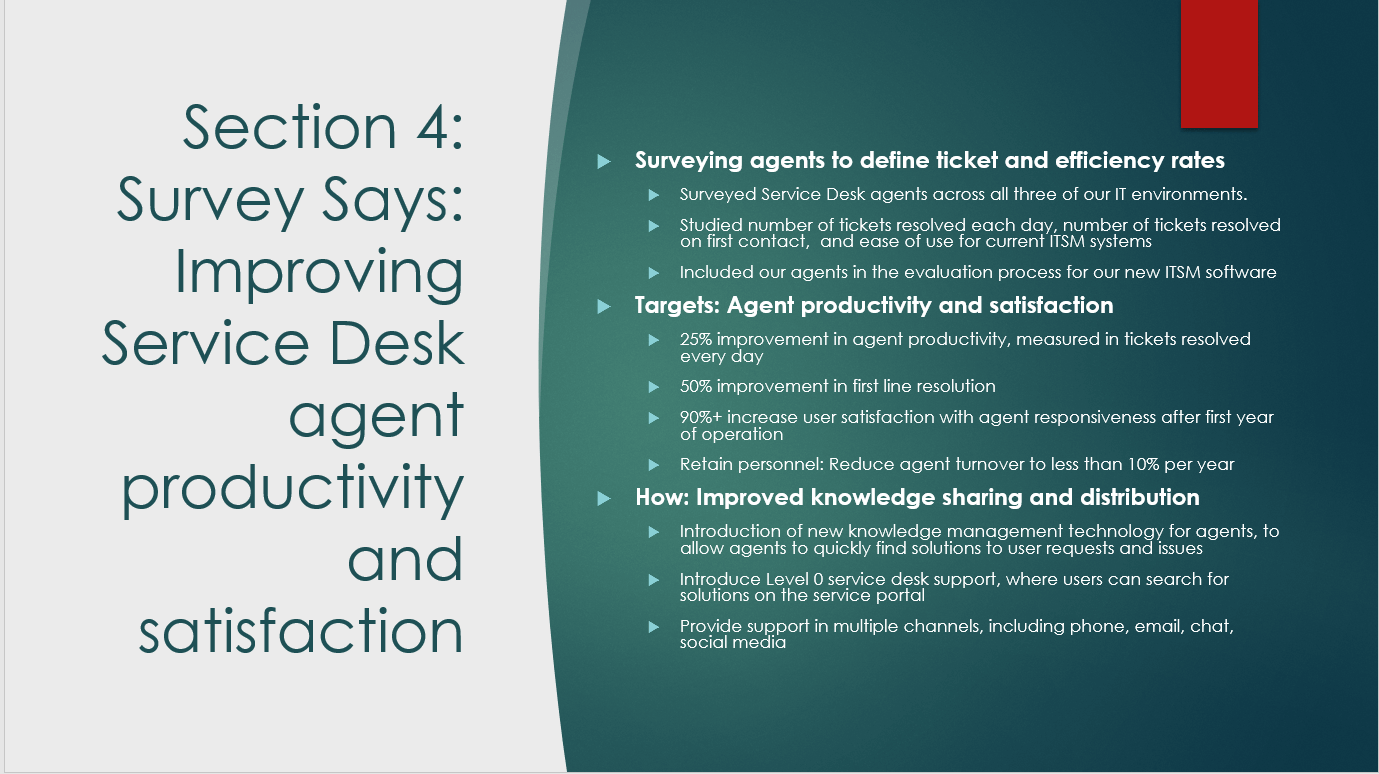
Figure 5: Sample presentation points for discussing Service Desk agent productivity improvements
Section 5: Science the heck out of it: Outlining process improvement gains
Having clearly established the benefits for business users and IT staff, you’ll want to dive deeper into the intrinsic gains accompanying your proposed best practices. Our example reflects ITIL terminology. If you subscribe to another methodology, you should use your own language and process names.
- Caution: With some audiences, especially those with a higher non-IT bias, you might want to exclude this section unless you like the sound of snoring and enjoy rotten eggs (or worse) being launched in your direction.
- Double caution: Be realistic, if not a tad conservative, with your benchmarks. You’ll come off as a great deal more credible.
Illustrative examples of items to include in Section 5:
Our targets: Process improvement gains
Problem Management
- 50% increase in root cause identifications
- 20% reduction in mean time to resolution (MTTR), reducing problem duration
Change Management
- 20% reduction in change-related incidents
- 40% increase in first-time change success rate
How: Problem management process improvements
- Introduce separate problem management process
- Relate all associated records across all processes
How: Change management process improvements
- Add a formalized and automated review and approval chain
- Introduce mandatory risk analysis investigation
Figure 6 shows what this part of the presentation might look like.
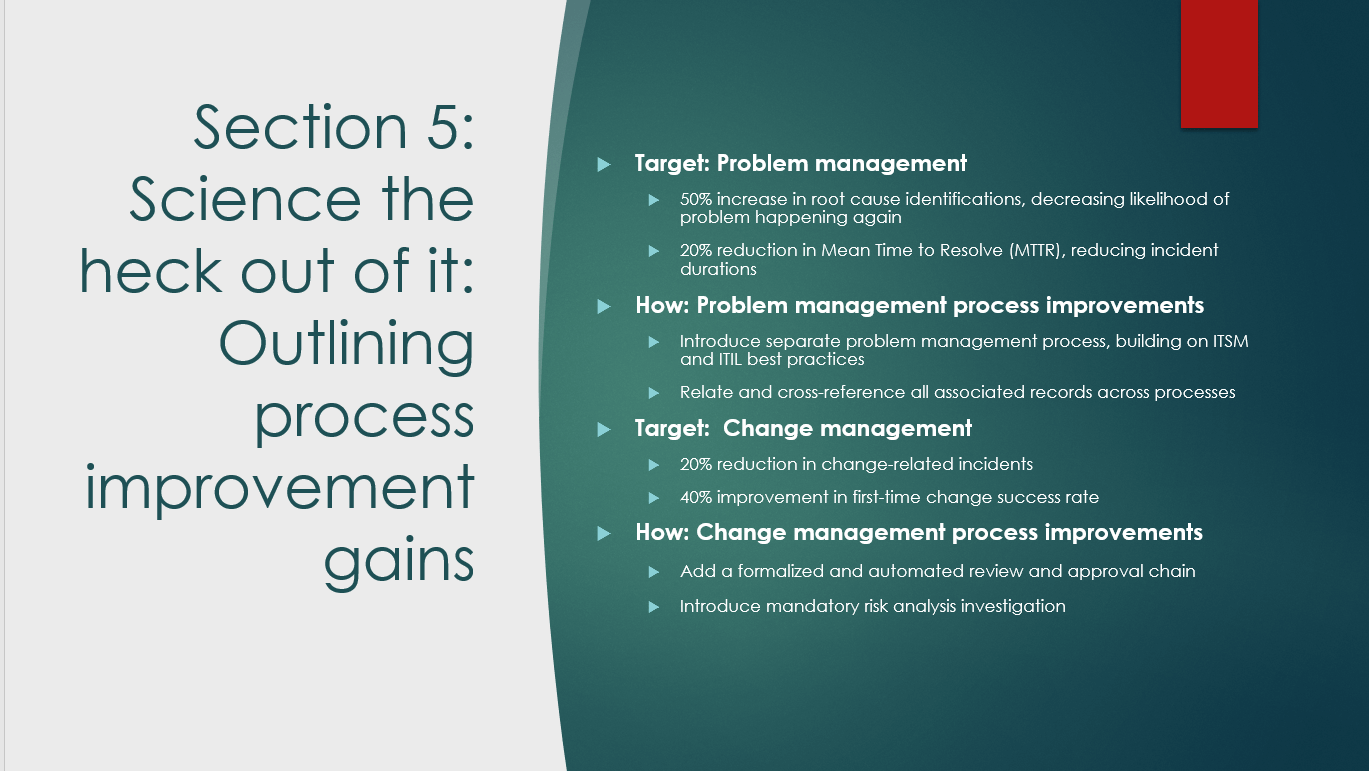
Figure 6: Sample presentation for discussing process improvement gains for an ITSM business case
Section 6: Skinny it down: Clarify cost reductions from a new deployment model
If your project involves moving to a cloud solution, there can be a number of advantages to present, including:
- Rapid deployment
- Greater agility
- Improved scalability
But don’t forget about the financial benefits. So, you could factor in what you’ll save by being able to remove dedicated server, storage, and even network hardware. But every environment and starting point is different, so if you do include this section make sure the projected benefits of this move will truly apply in your operating environment.
Typically, savings are annualized, so many organizations choose to represent them over a 3-5 year period in financial analyses. Of course, you won’t eliminate all costs. You still need to account for training, internal awareness, and testing.
Some helpful tips
- When entering targets, be realistic about how much you’ll actually be able to remove.
- If you reuse any hardware, record that as a “deferred purchase.”
Figure 7 shows some of the things you may present during the cost reductions section on an ITSM business case.
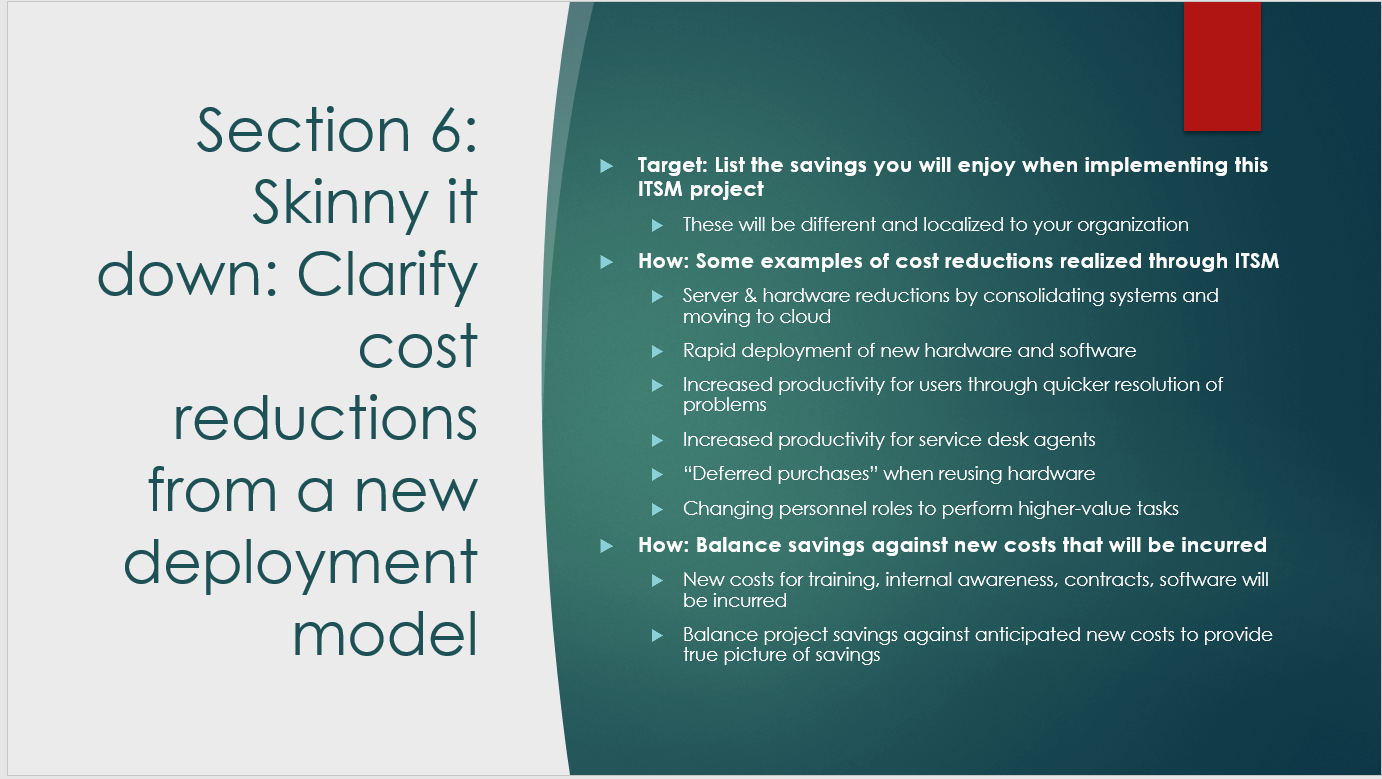
Figure 7: Items that could be included in the cost reductions section of an ITSM business case presentation
Section 7: Your final call to action: The financial analysis and asking for the cash
I’ve seen too many internal pitches crash, burn, and grind to a halt when it got to the financial part. Sadly, in most cases that analysis was given on slide 2—and there endeth the presentation!
So, to diffuse any debate or contention, I recommend including your financial analysis and funding request at the end of your deck.
Choose to highlight a few of the key savings in your introduction. However, its placement and formats depend on who’s in your audience and how your internal processes are organized. Be prepared to defend your numbers vehemently! so make sure you understand them, keep their representation simple, and don’t exaggerate!
Helpful tip: If the pitch is about getting general approval and buy-in—not about getting money—then do yourself a favor and leave it out entirely.

Figure 8: The last slide: conclude your case and ask for what you want
Additional resources
To use the PowerPoint template I created, download the PPT or PDF file. For more on service management, browse our BMC Service Management Blog or read these articles:
- ITIL 4 Guide, with 20+ articles
- ITSM Assessments: An Introduction and How To Get Started
- How To Evaluate Your Organization’s ITSM Needs
- ITSM Features to Look for in Great ITSM Software
- Managing IT as a Product—Not a Project
- Why Do ITSM Implementations Fail?







